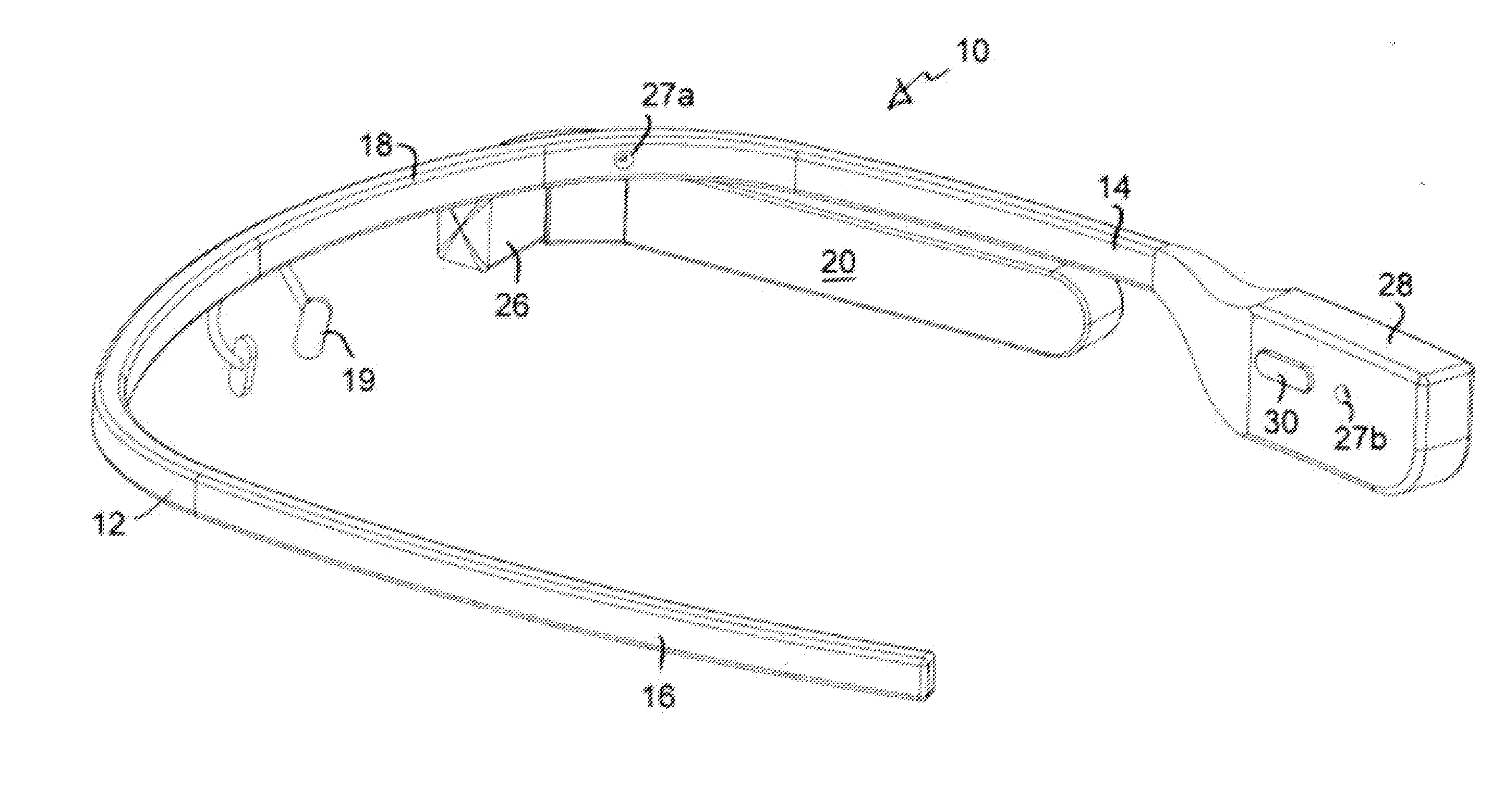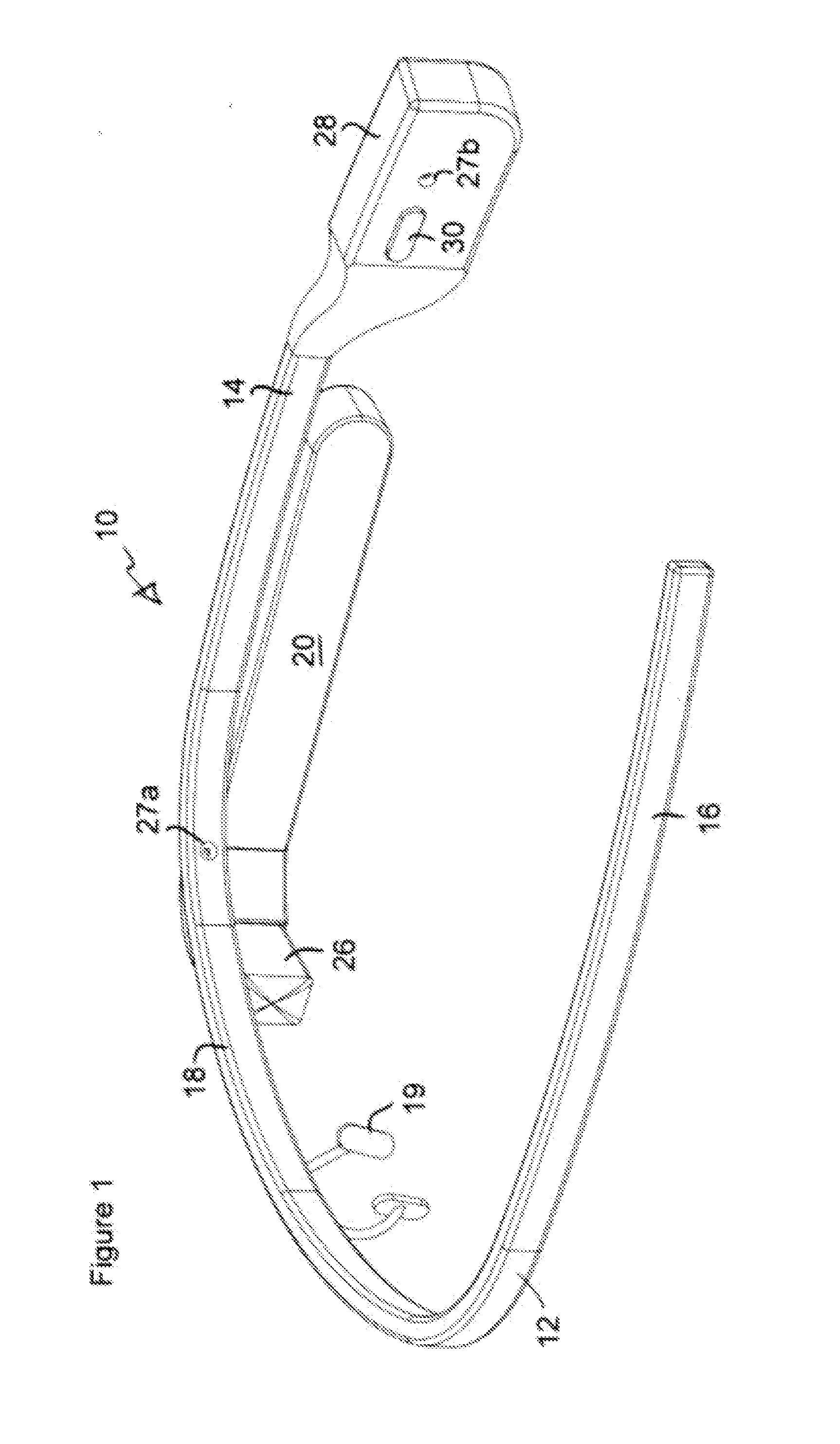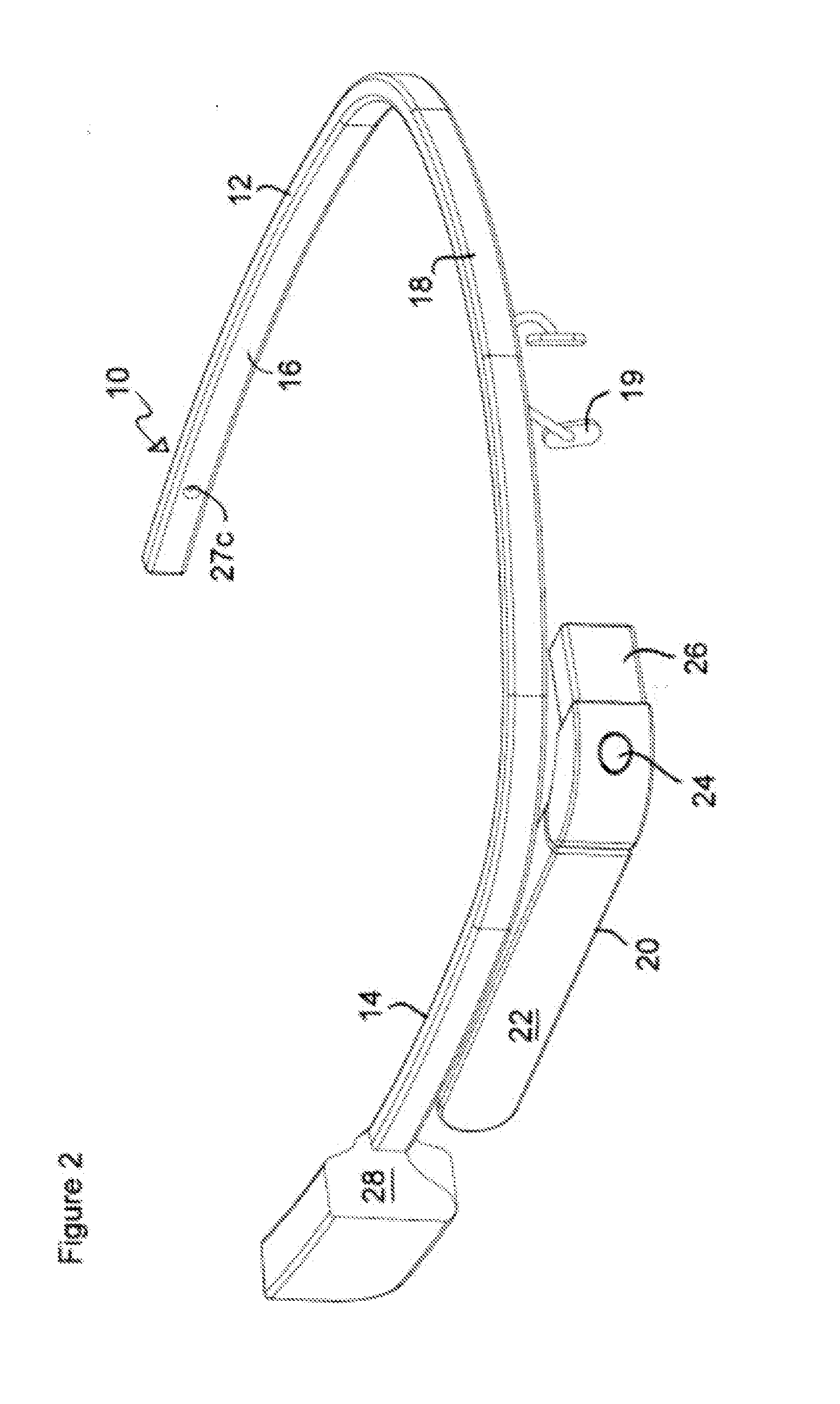System and Method for Controlling an Electronic Device
- Summary
- Abstract
- Description
- Claims
- Application Information
AI Technical Summary
Benefits of technology
Problems solved by technology
Method used
Image
Examples
Embodiment Construction
[0016]Referring to the Figures, an exemplary head-mounted computer device 10, similar to Google's Glass device is shown, including a generally U-shaped frame structure 12 that defines a right arm 14, a left arm 16 and a front member 18. Similar to conventional vision-correction glasses, a generally conventional nose support 19 is secured to front member 18 and is used to comfortably rest on a user's nose to help support device 10 on a user's face. Similarly, right arm 14 and left arm 16 are sized and shaped to comfortably engage the user's ears to help firmly hold frame 12 to the user's head. A first housing 20 is secured to light arm 14 and includes a touchpad input device 22, a camera (and lens) 24, a Heads-Up-Display (HUD) 26, a microphone 27a and other computer-related controlling circuitry and / or batteries (not shown). A second housing 28 is also secured to right arm 14 and includes a bone-conduction transducer 30 and other controlling circuitry and / or batteries (not shown). In...
PUM
 Login to View More
Login to View More Abstract
Description
Claims
Application Information
 Login to View More
Login to View More - R&D
- Intellectual Property
- Life Sciences
- Materials
- Tech Scout
- Unparalleled Data Quality
- Higher Quality Content
- 60% Fewer Hallucinations
Browse by: Latest US Patents, China's latest patents, Technical Efficacy Thesaurus, Application Domain, Technology Topic, Popular Technical Reports.
© 2025 PatSnap. All rights reserved.Legal|Privacy policy|Modern Slavery Act Transparency Statement|Sitemap|About US| Contact US: help@patsnap.com



